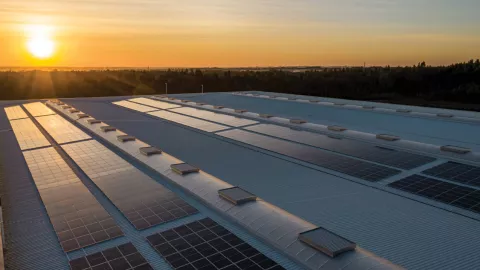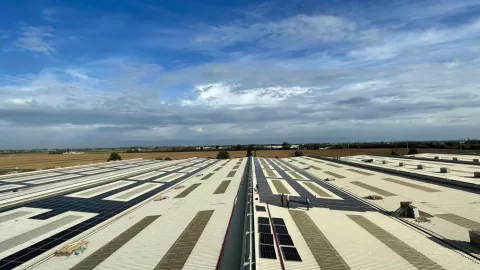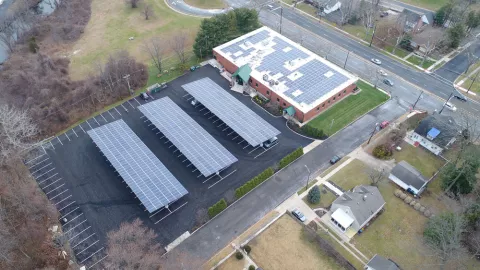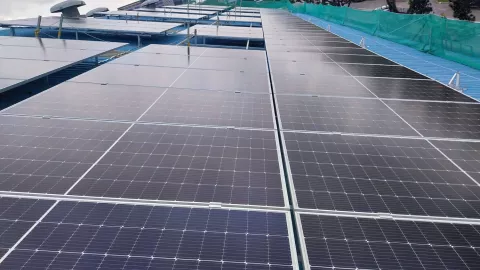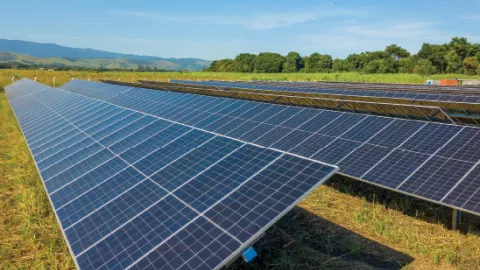Robot arrives at power plants in Spain
EDP Spain goes one step further in its commitment to innovation and successfully performs the first autonomous navigation test with a dynamic robot in a power generation plant. It is the first time this technology has been tested in a Spanish electricity generation plant.
It weighs barely 32 kilograms. Driven by its four legs, it can achieve speeds of up to 1,6 meters per second while dodging unforeseen obstacles and overcoming gaps of up to 30 cm of height and slopes of up to 30 degrees. It is called SPOT and it could be the perfect ‘colleague’ for EDP workers in hydroelectric power plants such as Tanes (Asturias), where the dynamic robot from Boston Dynamics has already successfully overcome the autonomous navigation test along with the Asturian company Alisys.
The robot has been able to navigate the different plants of the underground plant, going up and down the stairs and stopping at certain points to carry out an inspection or take a reading and even avoiding obstacles. This is only the first step in the Hidro project, financed by the government of the Principado de Asturias through the Sekuens agency. This project aims to investigate potential of dynamic robots, which are inspired by the biomechanics of quadrupedal animals, for maintenance operations in power plants.
“At EDP we are certain that robotics will play a key role in the future operation and maintenance of our plants”, says Enrique Menéndez, Innovation Projects Manager at EDP Spain.
These robots can work in hard-to-reach places and can move in harsh, rough, complex and variable environments, such as stairs, ramps or rocky terrain. They are also designed to return to their original state after a fall or incident. For this reason, Menéndez adds, these robots are set to become “a work tool which will make easier our colleagues’ life and work, as they will help improve efficiency and operation, even carrying out tasks that involve a certain amount of risk”. The robots will also “allow us to have eyes on each of the plants”.
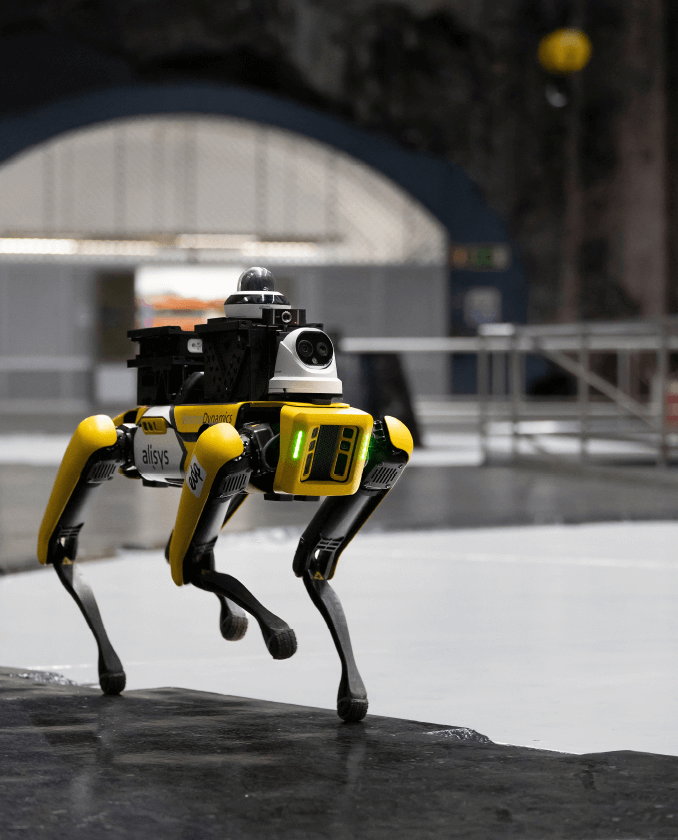
For this reason, Menéndez adds, these robots are set to become “a work tool which will make easier our colleagues’ life and work, as they will help improve efficiency and operation, even carrying out tasks that involve a certain amount of risk”. The robots will also “allow us to have eyes on each of the plants”.
Eyes, yes, because SPOT has a 360º range of vision and performance thanks to its five stereo cameras that provide audio and video. As well as two actuators on both sides of the hip and one actuator for each knee that provide 12 degrees of freedom of movement. It is powered by interchangeable 90-minute batteries and has a charging station where it can be recharged autonomously.
In the words of Emilio Fernández, Director of Hydroelectric Power Plants and Energy Dispatch at EDP Spain,“this new partner will represent a further step in the digitalisation and automation of the operation and maintenance tasks of hydroelectric power plants, helping workers to carry out these tasks both at the plants themselves and at the dams”. Work is currently underway to enable SPOT to make daily operating rounds at the power plant, taking readings and performing routine checks, either accompanying the manager or autonomously, while the responsible worker undertakes other, more value-added tasks. Since there are different types of meters, providing the robot with the necessary intelligence to read each of them is a highly complex task.
In addition, it will be assessed whether the robot would be able to advance tasks that are to be carried out by the guard or even avoid the deployment of the on-call team. For example, whether the robot itself would be able to restart the plant in the event that one of the groups is triggered and the on-call team is on duty at another plant. If it were possible to provide the robot with this functionality, according to the Innovation department, “delays in restarting the centre would be avoided and the efficiency of the service would be improved”. Eduardo Gómez de Tostón, CEO of Alisys, is confident that these devices “will be able to facilitate and help people to carry out monotonous and dangerous operations”. “We are positive that energy companies like EDP will use them to improve plant operations, monitoring and operation.
“EDP is a company renowned for its innovation, and we will continue to research and test technologies that can add value”, emphasises Pablo Fernández, director of the Aboño power plant. Both there and at the Tanes plant itself, they have already experimented with another machine, in this case the GHOST model, known for its use in military operations. These new companions, says Enrique Menéndez, are destined to be like the watchdog and the shepherd: “They do different jobs and when they are together, they complement each other to perform them even better”.
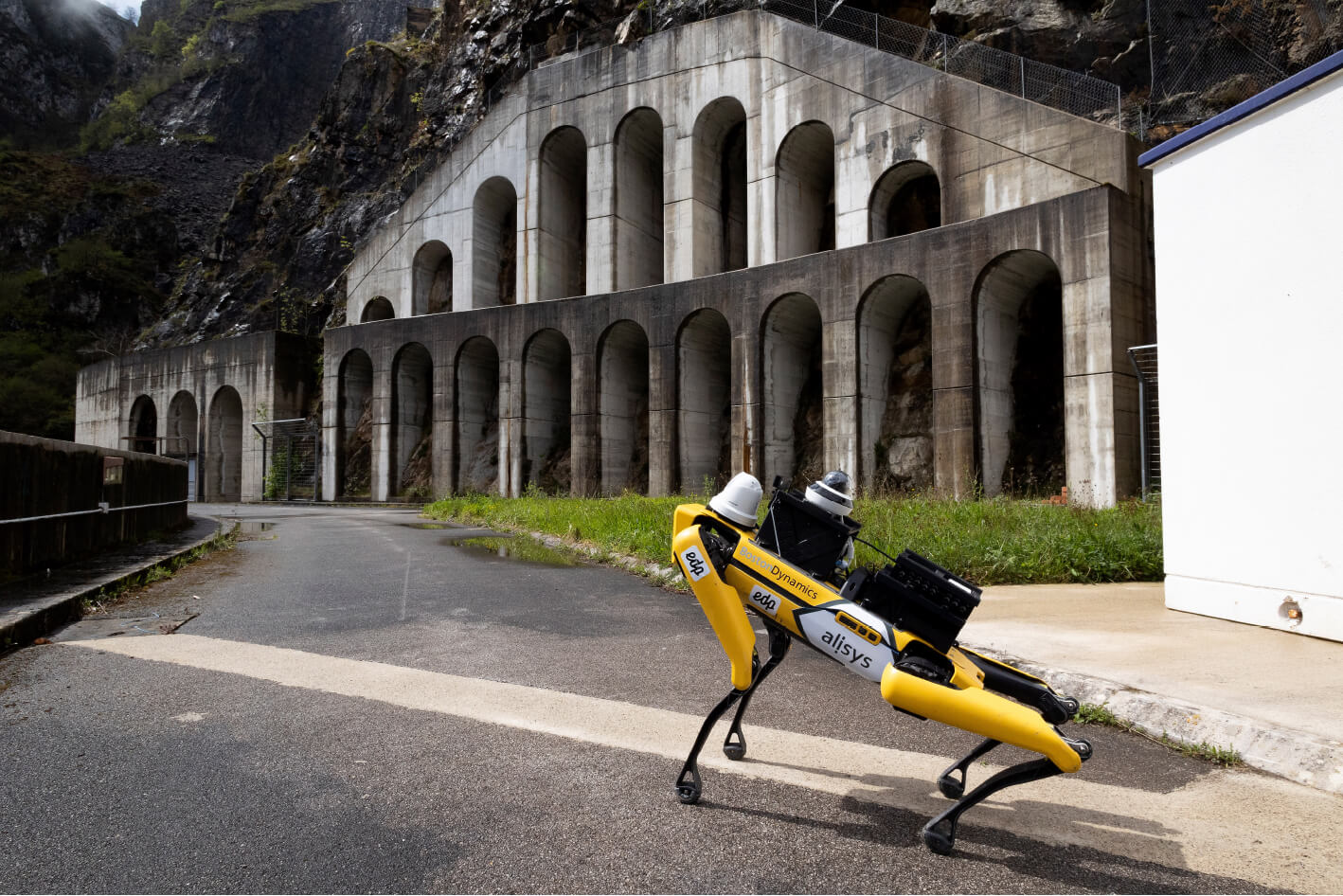
Work is currently underway to enable SPOT to make daily operating rounds at the power plant, taking readings and performing routine checks, either accompanying the manager or autonomously, while the responsible worker undertakes other, more value-added tasks. Since there are different types of meters, providing the robot with the necessary intelligence to read each of them is a highly complex task.
In addition, it will be assessed whether the robot would be able to advance tasks that are to be carried out by the guard or even avoid the deployment of the on-call team. For example, whether the robot itself would be able to restart the plant in the event that one of the groups is triggered and the on-call team is on duty at another plant. If it were possible to provide the robot with this functionality, according to the Innovation department, “delays in restarting the centre would be avoided and the efficiency of the service would be improved”. Eduardo Gómez de Tostón, CEO of Alisys, is confident that these devices “will be able to facilitate and help people to carry out monotonous and dangerous operations”. “We are positive that energy companies like EDP will use them to improve plant operations, monitoring and operation.
“EDP is a company renowned for its innovation, and we will continue to research and test technologies that can add value”, emphasises Pablo Fernández, director of the Aboño power plant. Both there and at the Tanes plant itself, they have already experimented with another machine, in this case the GHOST model, known for its use in military operations. These new companions, says Enrique Menéndez, are destined to be like the watchdog and the shepherd: “They do different jobs and when they are together, they complement each other to perform them even better”.
A modular robot to monitor the Tanos substation
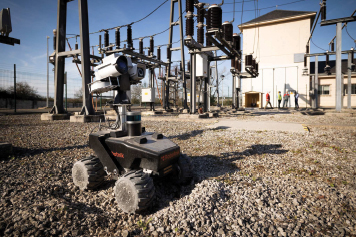
This project is another step forward in EDP’s commitment to innovation in its quest to improve the operation, availability and efficiency of any type of installation. In fact, says Enrique Menéndez, “from the Innovation department we are working on aerial, terrestrial and underwater robotics projects for all the company’s business units: hydroelectric generation, thermal generation, distribution and even for EDP Renewables colleagues”. A good example of this is the use of a modular robot developed by the Valencian company Robotnik to carry out supervision work at the Tanos substation in Torrelavega (Cantabria).
edpON magazine
Read more on our magazine
edpON magazine is a premium, global, up-to-date publication to enhance the drive, talent and energy within EDP. An element of cohesion for the 13,000 employees worldwide, reinforcing our culture and purpose. And, at the same time, an amplifier of the company's achievements among the external public.

